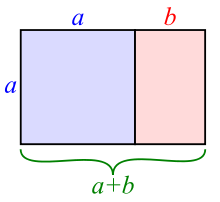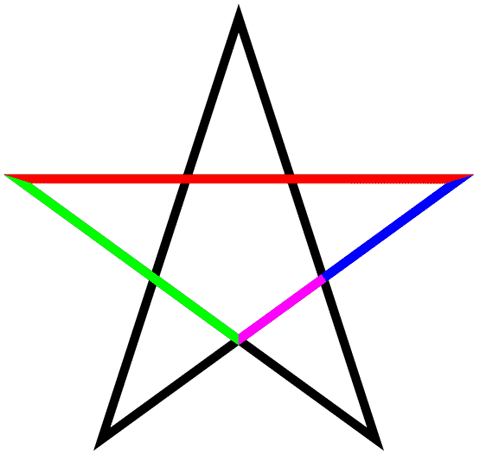During my first year placement, a key topic that I was regularly given the responsibility of planning lessons for within mathematics was budgeting. Now, within the Experiences and Outcomes documents there are various outcomes that cover this topic:
MNU 2-09a – “I can manage money, compare costs from different retailers, and determine what I can afford to buy.” (Scottish Government, 2009, pg.6)
MNU 2-09c – “I can use the terms profit and loss in buying and selling activities and can make simple calculations for this.” (Scottish Government, 2009, pg.6)
I write this blog post in the prospect of gaining a deeper reflection upon the experiences in relation to what we have been exploring during the Discovering Mathematics module.
Having an upper stages class allowed for more creative freedom in terms of setting up lessons that could be relevant to the learners within the class. More contextual and relevant aspects could be explored, with their existing knowledge of mathematics, in comparison to just establishing rules and procedures when calculating problems.
The community around the school had a large shopping centre where there were various shops that had large catalogues full of products for people to buy.

Using relevant resources, such as catalogues, allows for children to understand the connection between the ‘real world’ and the mathematical skills they learn
I used these catalogues in order to establish a lesson centred on the concept of working within a budget. I divided the class into varied ability groups, so that less confident students could be aided by those more confident in their calculations.
Their task was simple in its expectations: as a group, you have to decorate a living room whilst staying within budget. There was a list of required items they had to get and then there was space for free choice once they had got the basics (Sofas, TV, coffee table etc.) What the groups didn’t know was that I gave each group their own individual budget so that the types of furniture and the amount of furniture bought would be very different across the groups.
Once the groups had finished up with their purchases and calculation I brought them back as a whole class in order to gain some feedback on how successful they were with staying within budget. What I expected occurred: the students with the smaller budget struggled to stay in budget at first and had to adapt and change their expenditure. Also, the groups with larger budgets were able to buy more free choice products once they had worked out what money they had left over once getting the living room decorated.
“Why is it important to do calculations like this when buying things?” I asked the class.
The responses hit the nail on the head with the entire purpose of the lesson – so you know what money you actually have and so you know what you can afford. As much as the kids found it entertaining and different going catalogue shopping, it had a real underlying purpose that went beyond just reinforcing their mental math skills. The core purpose was to bring importance to skills they had learned, through the four operations, and bring a context that was familiar to them in order for them to see the relevance of learning mathematics in school. This lesson will no doubt occur for them once they reach adulthood and have to decorate their own homes.
Beyond this lesson, I also got the groups to use IT in order to explore other shopping websites to compare the prices of similar products (which taught them the importance of searching around when being restricted to a budget, as one price isn’t final) and I also wanted to delve into the marketing side of things when exploring the catalogues.
A key point made by a few of the students was that the majority of the products were not simply £15 or £50; they were £14.99 or £49.99. I knew that I couldn’t lose the opportunity to explore this topic further.
The whole consumerism psychology behind pricing of products has been thoroughly explored by these huge companies that we shop from. Psychological pricing is a phenomenon that is literally inescapable across the vast amounts of aisles within supermarkets and shopping centres. It is everywhere
ONLY 99P! SALE! ALBUMS UNDER £5! REDUCTIONS!
These bold, bright and in-your-face slogans are all there to get us to cave into buying something, to put it bluntly. These strategies are also there so that, when we buy something, we feel as though we have gained some form of saving in our spending. There are various theories and concepts of why .99 is so effectively used, however, a core reason that a price ending in .99 or .95 is chosen is because we read prices from left to right, so we associate the first number as being the overall price (Melina, 2011). Another example is that it is harder for us to calculate the total cost by the time we have amassed a large quantity of shopping in our carts by the time we arrive at the checkouts (in real life or online) and this can be another example of maths anxiety plaguing adults who fear working with numbers. We psychologically believe that £4.99 is cheaper than seeing £5 because our brains first see the 4. The ‘under £5’ slogan is one that is used regularly to heighten this idea of saving being gained, when in actual fact the product is probably £4.99 or £4.95. Factually it is under £5 but, is there really a massive saving here?
“[Consumers] have become conditioned to believe that they are getting a good deal when they buy something with a price ending in .99 even if the markdown is minimal” (Melina, 2011)
The children in my class were very aware of this aspect when we decided to explore the topic of shopping and budgeting further as a whole class. Links to buying their favourite sweets at the shop outside the school were made when exploring the fact that businesses are, economically, looking to make as much money from us as positively possible. Another important point that one of the kids brought up was that, when buying things, they mainly received back change after they had bought something.
Change is another tool utilised by businesses. When we purchase something, it is normally unlikely that we have the exact change outright, so we pay with something over the price and, in return, we receive the change in difference. Doesn’t seem complicated, does it? However, with fractional totals come more lucrative gains from vendors because studies have shown that we like receiving money back once we have spent, what was most likely a lot of money. It doesn’t make the blow of handing over cash so hard to take, continuing our spending because we aren’t going away completely empty-handed. (Bizer and Schindler, 2005)

Teaching children to be critical of pricing strategies used by big companies widens the importance of Mathematics
Overall, the various lessons that I planned on budgeting explored topics that go far beyond the realm of perceived primary school mathematics. Skills such as addition, subtraction, rounding, place value and more were utilised on top of a contextual learning space of consumerism, marketing awareness and psychological studies of how we shop! This ties in well with Ma’s theory on connectedness, which I wasn’t made aware of until studying this module.
Reflecting on placement now, in the midst of studying the Discovering Mathematics module, I can now see how my first experience with teaching mathematics was quite successful. Beforehand, I had to brush up on my mental arithmetic, explore the psychology of marketing and then construct lessons that fit towards the E’s and O’s. This shows that I was making myself aware of the ‘simple but powerful basic concepts of mathematics’ (Ma, 2010, pg. 122) in order to make my lessons more effective. This links well with Ma’s Basic Ideas in terms of the PUFM (profound understanding of fundamental mathematics) an educator must know in order to be successful in their teaching.
Progressing through the module, I am very glad that I chose it because it not only benefits my conceptualisation of mathematics for the future, but it is also reshaping my understanding of my previous experiences and sparking points of professional reflection (and reflection upon what money I’ve spent in the sales!).
Reference:
Bizer, George Y. and Schindler, Robert M. (2005) Direct evidence of ending-digit-drop-off in price information processing [Article] Available at: http://onlinelibrary.wiley.com/doi/10.1002/mar.20084/full (Accessed 25th of October 2017)
Ma, Liping (2010) Knowing and Teaching elementary mathematics: teachers’ understanding of fundamental mathematics in China and the United States New York: Routledge.
Melina, Remy (2011) Why Do Prices End in .99? [Article] Available at: https://www.livescience.com/33045-why-do-most-prices-end-in-99-cents-.html (Accessed 25th of October 2017)
Scottish Government (2009) Numeracy and mathematics: experiences and outcomes document [pdf] available at: https://www.education.gov.scot/Documents/numeracy-maths-eo.pdf
Interesting Link:
http://news.bbc.co.uk/1/hi/magazine/7522426.stm Why is a 99p price tag so attractive?






